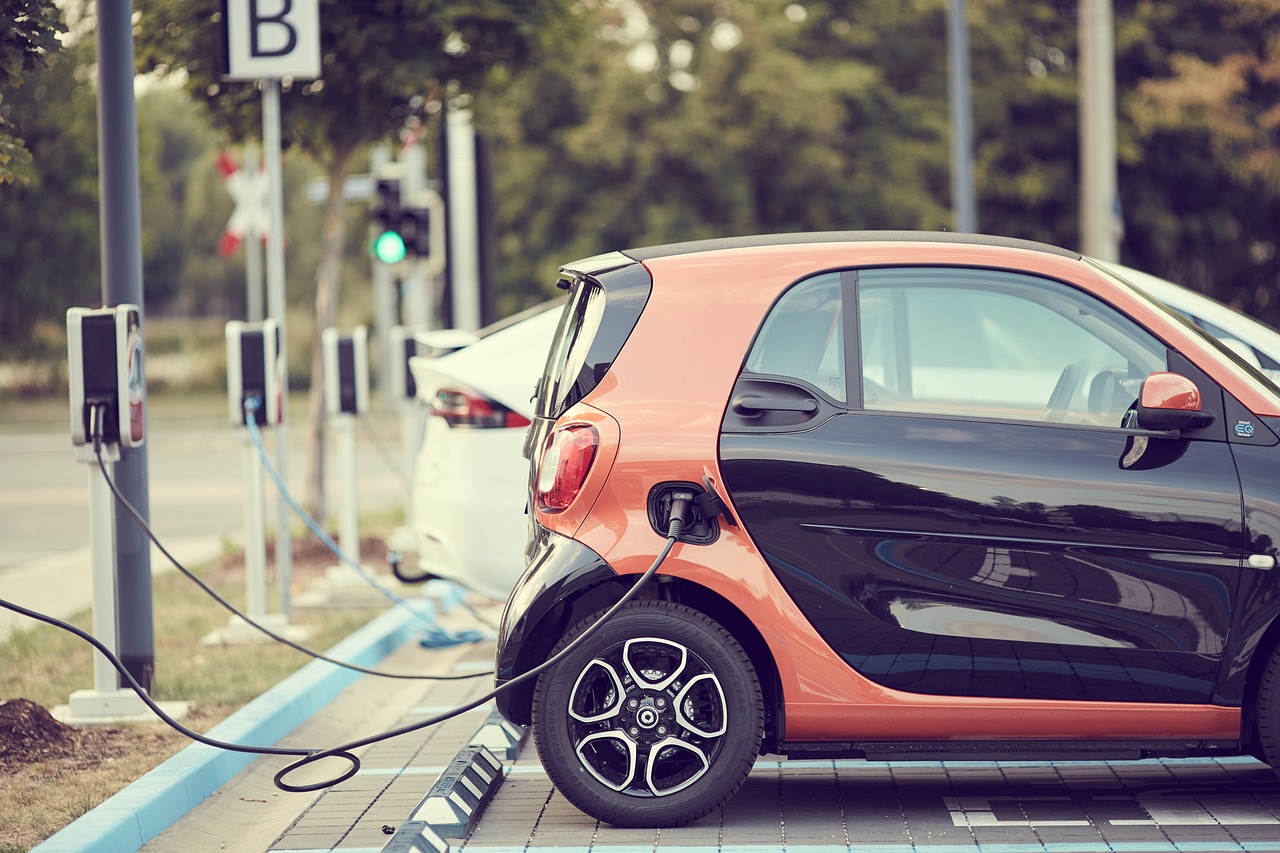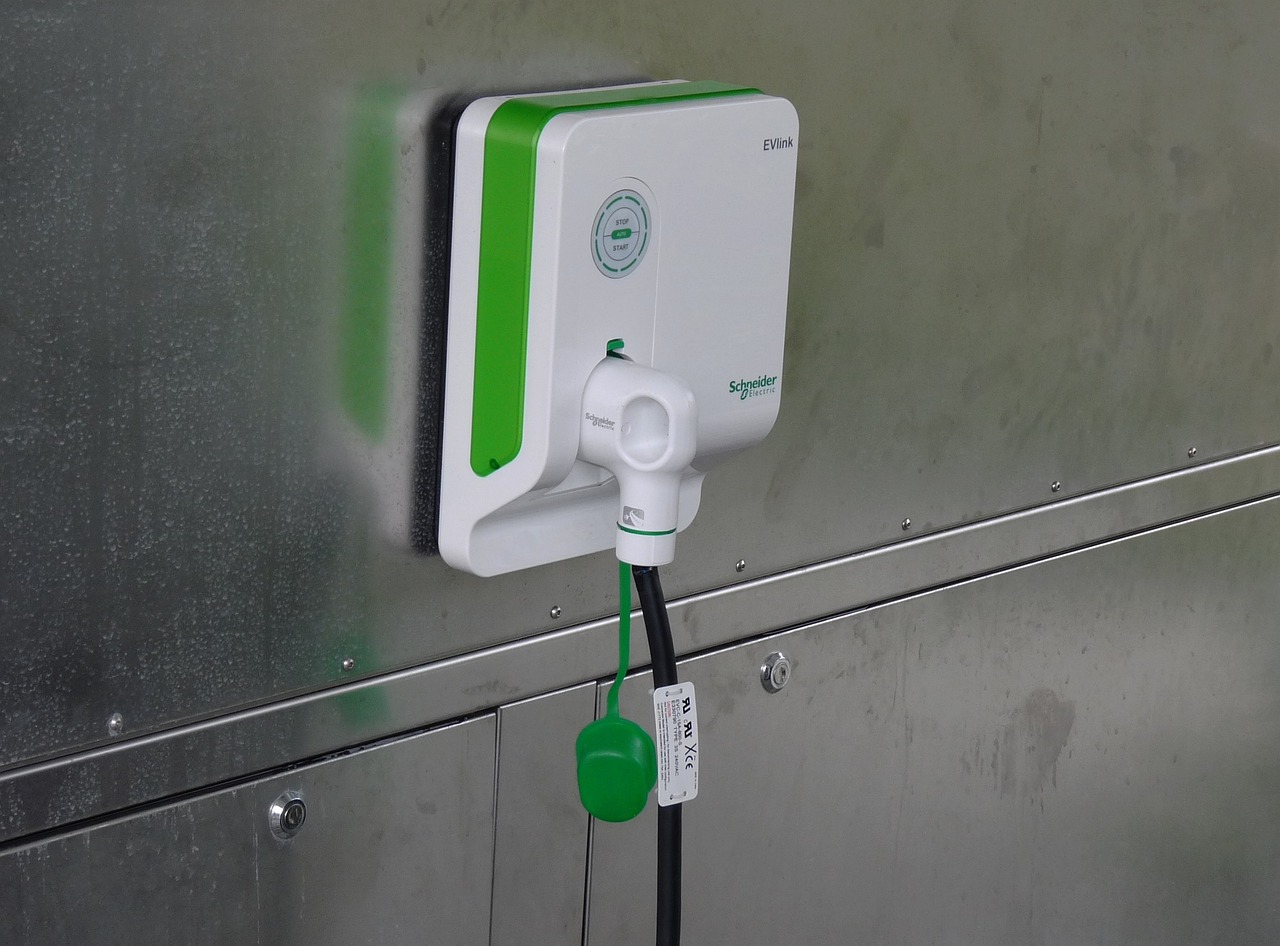Are Consumers Really Embracing Electric Cars?
In recent years, the electric vehicle (EV) market has exploded, leaving many to wonder: are consumers genuinely embracing electric cars? The answer is both exciting and complex. As we navigate through this electrifying landscape, we uncover a myriad of factors influencing consumer behavior, from environmental awareness to economic considerations. The shift towards sustainable transportation is not merely a trend; it reflects a profound change in how individuals perceive and interact with mobility.
To truly understand this phenomenon, we must first look at the numbers. According to recent statistics, electric vehicle sales have skyrocketed, with a remarkable increase of over 40% in the last year alone. This surge can be attributed to several key elements:
- Technological advancements: Innovations in battery technology and charging solutions have made EVs more accessible and efficient.
- Environmental concerns: Growing awareness of climate change has driven consumers to seek greener alternatives.
- Government incentives: Tax credits and rebates have made EVs financially attractive.
But numbers alone don't tell the whole story. The emotional and psychological factors at play are equally significant. Many consumers are now viewing electric cars not just as a mode of transport but as a statement of their values. They are choosing to drive electric vehicles as a way to contribute to a cleaner planet, much like how one might choose organic food or eco-friendly products. This shift in mindset is crucial for understanding the broader acceptance of EVs.
Moreover, the narrative around electric vehicles is evolving. Gone are the days when EVs were perceived as quirky, niche products. Today, they are being embraced by mainstream consumers, with manufacturers rolling out a wider variety of models to cater to different tastes and preferences. Whether it's a sporty sedan or a practical SUV, there’s an electric option for everyone, making the transition to electric driving more appealing than ever.
However, it’s essential to acknowledge that challenges remain. While the enthusiasm for electric cars is palpable, barriers such as range anxiety and initial costs still deter some potential buyers. Range anxiety, the fear that a vehicle won't have enough battery life to reach its destination, continues to loom large in the minds of consumers. This concern is being tackled head-on by manufacturers through advancements in battery technology and the expansion of charging infrastructure.
As we look toward the future, it’s clear that the electric vehicle movement is more than just a passing fad. With ongoing innovations and a growing commitment to sustainability, consumers are not only embracing electric cars; they are reshaping the automotive landscape. The question is no longer if consumers will adopt electric vehicles, but rather how quickly this transformation will unfold.
- What are the main benefits of owning an electric vehicle? Electric vehicles offer lower operating costs, reduced emissions, and often come with government incentives.
- How far can electric cars travel on a single charge? Most modern electric cars can travel between 150 to 300 miles on a single charge, depending on the model.
- Are electric cars more expensive than traditional vehicles? While the initial purchase price may be higher, the total cost of ownership can be lower due to savings on fuel and maintenance.

The Rise of Electric Vehicles
Electric vehicles (EVs) have experienced a remarkable surge in popularity over the past decade, transforming the automotive landscape in ways we could only dream of a few years ago. This shift is not just a fleeting trend; it's a fundamental change driven by a combination of technological advancements, environmental concerns, and evolving consumer preferences. As we delve into the statistics, it becomes clear that the rise of electric vehicles is more than just numbers; it's a movement towards a sustainable future.
According to recent reports, global EV sales have skyrocketed, with a staggering increase of over 40% in just the last year alone. This growth is fueled by a growing awareness of climate change and the urgent need for cleaner transportation options. In 2022, electric vehicles accounted for approximately 10% of all new car sales worldwide, a figure that is expected to rise as more manufacturers enter the market and consumer awareness continues to grow.
One of the most exciting aspects of this rise is the expanding range of models available. Initially, consumers had limited choices, often feeling that electric cars were synonymous with small, compact vehicles. However, the market has evolved dramatically. Today, you can find everything from electric SUVs to luxury sedans, catering to a wide array of tastes and needs. This diversification not only attracts eco-conscious buyers but also appeals to traditional car enthusiasts who may have previously dismissed EVs.
Furthermore, the advancements in battery technology have played a pivotal role in enhancing the appeal of electric vehicles. Manufacturers are now producing batteries that offer longer ranges and faster charging times, addressing some of the most significant concerns potential buyers have had in the past. For instance, many new models can travel over 300 miles on a single charge, making them more practical for everyday use. This shift has helped to dispel the myth that electric cars are only suitable for short commutes.
In addition to technological improvements, the growing availability of charging infrastructure has made it easier for consumers to consider electric vehicles as a viable option. Charging stations are popping up in urban areas, highways, and even rural communities, providing the convenience that many potential buyers were seeking. A recent survey indicated that 70% of respondents felt more comfortable purchasing an EV knowing that charging stations were readily accessible. This is a clear indication that infrastructure plays a crucial role in consumer adoption.
In conclusion, the rise of electric vehicles is a multifaceted phenomenon driven by a combination of factors including technological innovation, environmental awareness, and consumer demand for diverse options. As the market continues to evolve, it's clear that electric vehicles are not just a passing trend but a significant part of the future of transportation.
- What are electric vehicles? Electric vehicles (EVs) are cars that are powered entirely or partially by electricity, using electric motors instead of traditional internal combustion engines.
- Are electric vehicles really better for the environment? Yes, EVs produce zero tailpipe emissions, which contributes to reducing air pollution and greenhouse gas emissions when charged with renewable energy.
- How long does it take to charge an electric vehicle? Charging times can vary depending on the type of charger used. Fast chargers can replenish an EV's battery to 80% in about 30 minutes, while standard home chargers may take several hours.
- What is range anxiety? Range anxiety is the fear that a vehicle has insufficient charge to reach its destination, which has been a common concern among potential EV buyers.

Consumer Perceptions of Electric Cars
Understanding consumer attitudes towards electric cars is crucial in shaping the future of the automotive industry. With the rise of electric vehicles (EVs), it's essential to take a closer look at how potential buyers perceive these innovative machines. Many consumers have a mix of excitement and skepticism when it comes to adopting electric cars. On one hand, there's a growing enthusiasm for sustainability and the environmental benefits that EVs promise. On the other hand, misconceptions and uncertainties still cloud the minds of many potential buyers.
A significant factor influencing consumer perceptions is environmental awareness. As more people become conscious of climate change and the impact of fossil fuels, they are increasingly drawn to electric vehicles. The idea that driving an EV contributes to a cleaner planet is appealing, and many consumers are eager to do their part. However, this positive perception can be overshadowed by common misconceptions. For instance, some potential buyers still believe that electric cars lack power or performance compared to traditional vehicles. This myth is gradually being dispelled as more high-performance electric models hit the market, showcasing that EVs can indeed offer thrilling driving experiences.
Another aspect that shapes consumer opinions is government incentives. Tax credits, rebates, and other financial incentives can significantly sway a buyer's decision. When consumers see that purchasing an electric vehicle could save them money upfront, their interest often piques. However, the effectiveness of these programs can vary widely by region, leading to disparities in EV adoption rates. In areas where incentives are robust, EV sales tend to flourish, while in regions with limited support, consumer interest may wane.
The charging infrastructure also plays a pivotal role in consumer confidence. Many potential EV buyers worry about the availability of charging stations and whether they’ll have the convenience of charging their vehicles as easily as they would fill up a gas tank. As the number of charging stations increases, so does consumer confidence. Current statistics show that the number of public charging stations is on the rise, but the pace of this expansion needs to keep up with growing demand. Consumers want to feel assured that they won't be left stranded without a charge, which is why the development of a robust charging network is essential.
Moreover, economic considerations can't be overlooked. The initial purchase price of electric vehicles can be higher than their gasoline counterparts, which can deter some consumers. However, as technology advances and production scales up, prices are expected to decrease. Additionally, potential buyers are becoming more aware of the long-term savings that come with EV ownership, such as lower maintenance costs and reduced fuel expenses. This shift in understanding is gradually changing perceptions, making EVs a more attractive option for budget-conscious consumers.
In summary, consumer perceptions of electric cars are influenced by a complex interplay of environmental concerns, government incentives, charging infrastructure, and economic factors. As the market continues to evolve, addressing these perceptions will be key to increasing the adoption of electric vehicles. By dispelling myths and providing clear information, manufacturers and policymakers can help consumers feel more confident in their choices, paving the way for a more sustainable future.
- What are the main benefits of owning an electric car? Electric cars are environmentally friendly, often cheaper to operate, and typically require less maintenance than traditional vehicles.
- How far can electric cars travel on a single charge? The range varies by model, but many electric cars can now travel over 200 miles on a single charge.
- Are there enough charging stations available? Yes, the number of charging stations is increasing rapidly, making it easier for EV owners to find charging options.
- What incentives are available for purchasing an electric vehicle? Many governments offer tax credits, rebates, and other incentives to encourage the purchase of electric vehicles.

Environmental Awareness
In today's world, is more than just a buzzword; it's a movement that influences our daily choices and lifestyles. As consumers become increasingly aware of the impact of their actions on the planet, the shift towards electric vehicles (EVs) has gained momentum. This change isn't merely about adopting a new mode of transportation; it's about embracing a sustainable future. Think of it as a ripple effect—when one person makes a conscious choice to drive an electric car, it encourages others to consider their own environmental impact.
Studies show that a significant percentage of consumers are now prioritizing sustainability in their purchasing decisions. According to recent surveys, around 70% of potential car buyers express a preference for eco-friendly vehicles, reflecting a growing commitment to reducing carbon footprints. This shift is not just a trend; it's a fundamental change in how we view our relationship with the environment. More people are realizing that by choosing electric cars, they are contributing to a cleaner, healthier planet.
Moreover, the urgency of climate change has heightened this awareness. With alarming reports about rising temperatures, melting ice caps, and extreme weather events, consumers are increasingly motivated to take action. Electric vehicles, with their lower emissions compared to traditional gasoline-powered cars, present a viable solution. They symbolize hope in the fight against pollution and climate change. For many, driving an EV is akin to wearing a badge of honor, signifying their commitment to protecting the Earth.
However, it’s essential to recognize that while the awareness is growing, there are still misconceptions that need addressing. For instance, some consumers believe that electric cars are not as powerful or reliable as their gasoline counterparts. This misconception can be likened to the early days of mobile phones when many doubted their practicality. Just as mobile technology evolved, so too have electric vehicles, with advancements in battery technology and performance. Today’s EVs are not only powerful but also offer impressive ranges that can easily meet the needs of most drivers.
To further illustrate the impact of environmental awareness on consumer behavior, consider the following table:
| Factor | Impact on EV Adoption |
|---|---|
| Increased Knowledge of Climate Change | Higher interest in sustainable options |
| Government Initiatives | Increased incentives for EV purchases |
| Media Coverage | Greater visibility of environmental issues |
| Peer Influence | Encouragement to adopt eco-friendly practices |
In conclusion, the relationship between environmental awareness and electric vehicle adoption is undeniable. As consumers become more informed and concerned about their environmental impact, the demand for EVs continues to rise. This trend not only reflects a personal choice but also represents a collective effort towards a more sustainable future. By embracing electric vehicles, consumers are not just making a financial decision; they are participating in a larger movement aimed at protecting our planet for future generations.
- What are the main environmental benefits of electric vehicles? Electric vehicles produce zero tailpipe emissions, which helps reduce air pollution and greenhouse gas emissions.
- Are electric vehicles really better for the environment? Yes, especially when charged using renewable energy sources, EVs can significantly lower overall emissions compared to traditional vehicles.
- How can I contribute to environmental awareness? You can start by educating yourself and others about sustainable practices and considering electric vehicles as your next car purchase.

Government Incentives
When it comes to making the leap to electric vehicles (EVs), play a pivotal role in tipping the scales. These incentives often manifest in various forms, such as tax credits, rebates, and even grants aimed at reducing the upfront costs associated with purchasing an electric vehicle. For many consumers, the price tag of an EV can be daunting, but these financial boosts can significantly lower the barrier to entry.
For instance, in the United States, the federal government offers a tax credit of up to $7,500 for qualifying electric vehicles. This means that if you buy an EV, you might be able to deduct this amount from your federal tax bill, making it a more attractive option. Additionally, many states have their own incentives, which can include further tax reductions, rebates, or even perks like carpool lane access and reduced registration fees. The combination of these incentives can lead to substantial savings, making electric vehicles not just an environmentally friendly choice, but also a financially savvy one.
Moreover, these incentives are not just limited to the purchase of the vehicle itself. Some governments are also investing in charging infrastructure, which is crucial for boosting consumer confidence in EVs. By funding the installation of charging stations in public places, workplaces, and residential areas, governments are effectively addressing one of the major concerns that potential EV buyers have: charging availability.
To illustrate the impact of these incentives, consider the following table that summarizes various government incentives available in different regions:
| Region | Incentive Type | Incentive Amount |
|---|---|---|
| United States (Federal) | Tax Credit | $7,500 |
| California | Rebate | $2,000 |
| Canada | Tax Credit | Up to $5,000 |
| United Kingdom | Plug-in Car Grant | Up to £2,500 |
In conclusion, government incentives are not just a nice-to-have; they are a critical driver of electric vehicle adoption. By reducing the financial burden and addressing infrastructure needs, these incentives help pave the way for a more sustainable future. As consumers become increasingly aware of the benefits of EVs, the role of government support will undoubtedly remain essential in shaping the landscape of electric vehicle ownership.
- What are the main types of government incentives for electric vehicles?
Government incentives typically include tax credits, rebates, and grants aimed at reducing the initial purchase price of electric vehicles. - How much can I save with government incentives?
The amount varies by region and can range from a few thousand dollars to several thousand, depending on local and federal programs. - Are there incentives for charging infrastructure?
Yes, many governments also provide funding to increase the number of public charging stations, which helps alleviate concerns about charging availability. - Do incentives apply to all electric vehicles?
Incentives may vary based on the specific model and manufacturer, so it’s essential to check eligibility before making a purchase.

Charging Infrastructure
The availability of charging stations is a critical factor that influences potential electric vehicle (EV) buyers. Imagine you're planning a road trip in an electric car. The excitement builds, but then a nagging thought creeps in: "Where will I charge my car?" This scenario is all too common for many consumers considering the leap to electric. As EV adoption grows, so does the demand for a robust charging infrastructure. Without it, even the most enthusiastic consumers might hesitate to make the switch.
In recent years, the growth of charging stations has been impressive, but there is still a long way to go. According to recent statistics, the number of public charging points has increased significantly, with over 100,000 charging stations available across the United States as of 2023. However, this number still pales in comparison to traditional gas stations, leading to a lingering sense of uncertainty among potential buyers. To put this into perspective, here’s a simple table illustrating the current state of charging infrastructure:
| Type of Charging Station | Number of Stations | Average Charging Time |
|---|---|---|
| Level 1 (Home Charging) | Over 80,000 | 8-12 hours |
| Level 2 (Public Charging) | Approximately 20,000 | 4-6 hours |
| DC Fast Charging | Over 5,000 | 30 minutes - 1 hour |
This table highlights the different types of charging stations available, showcasing the variety of options for EV owners. However, while the numbers are promising, the distribution of these stations is often uneven, especially in rural areas where charging options can be scarce. This lack of accessibility can lead to what is known as range anxiety, a term that describes the fear of running out of battery power before reaching a charging point.
Moreover, the speed at which these stations charge vehicles can greatly affect consumer confidence. For instance, while home charging (Level 1) is convenient, it can take a considerable amount of time to fully charge a vehicle. On the other hand, DC Fast Charging stations can provide a substantial charge in a fraction of the time, making long-distance travel much more feasible for EV owners.
To enhance consumer confidence, automakers and charging network providers are collaborating to expand the charging infrastructure. Initiatives such as the installation of chargers in parking lots, shopping centers, and along highways are becoming more common. Additionally, many cities are actively promoting the development of charging stations as part of their sustainability goals. This is a win-win situation, as it not only boosts EV adoption but also contributes to cleaner air and reduced greenhouse gas emissions.
In conclusion, while the current state of charging infrastructure presents challenges, ongoing developments and investments are paving the way for a more accessible and efficient charging network. As consumers become more aware of these advancements, their hesitation may diminish, leading to a more widespread acceptance of electric vehicles. The key takeaway is that a well-developed charging infrastructure is not just a convenience; it is a necessity for the future of sustainable transportation.

Economic Considerations
When it comes to electric vehicles (EVs), cost is a major player in the decision-making process for consumers. While the initial purchase price of an electric car can be higher compared to traditional gasoline vehicles, it's essential to look beyond that upfront investment. Many consumers are beginning to realize that the long-term savings associated with EV ownership can significantly outweigh the initial costs. For instance, electric cars typically have lower maintenance costs due to fewer moving parts and no need for oil changes. Additionally, the cost of electricity for charging is generally less than the cost of gasoline, which can lead to substantial savings over time.
To illustrate the potential savings, let's take a look at a comparison of costs between a conventional vehicle and an electric vehicle over a span of five years:
| Cost Category | Conventional Vehicle | Electric Vehicle |
|---|---|---|
| Purchase Price | $30,000 | $35,000 |
| Fuel Costs (5 years) | $10,000 | $3,000 |
| Maintenance Costs (5 years) | $2,500 | $1,000 |
| Tax Credits/Rebates | $0 | -$7,500 |
| Total Cost Over 5 Years | $42,500 | $31,500 |
As shown in the table above, even though the initial purchase price of an electric vehicle is higher, the overall savings can be quite significant. This is especially true when factoring in government incentives that can help offset the initial costs. Many governments offer tax credits and rebates for electric vehicle purchases, making them more financially appealing.
Furthermore, as technology advances, the cost of batteries—which is one of the most expensive components of an electric vehicle—is steadily decreasing. This reduction in battery costs is expected to lead to lower prices for EVs in the near future, making them accessible to an even wider range of consumers.
However, it's not just about the purchase price and fuel savings; there are also related to the broader impact of electric vehicles on the economy. For instance, as more consumers shift towards EVs, there could be a significant reduction in oil dependency, which can lead to economic stability and environmental benefits. Moreover, the growth of the electric vehicle market is creating jobs in manufacturing, charging infrastructure development, and maintenance services.
In conclusion, while the initial costs of electric vehicles may raise eyebrows, the long-term economic benefits and savings can be quite compelling. As the market evolves and technology continues to improve, we can expect electric vehicles to become not only a sustainable choice but also a financially savvy one.
- Are electric vehicles more expensive than traditional cars? Yes, the initial purchase price can be higher, but long-term savings in fuel and maintenance often make them more economical.
- What kind of government incentives are available for electric vehicle buyers? Many governments offer tax credits, rebates, and grants to encourage the purchase of electric vehicles.
- How much can I save on fuel with an electric vehicle? The savings depend on your driving habits, but many EV owners report spending significantly less on fuel compared to gasoline vehicles.
- Will the price of electric vehicles decrease in the future? Yes, as battery technology improves and production scales up, the prices of electric vehicles are expected to decrease.

Barriers to Adoption
Despite the growing excitement surrounding electric vehicles (EVs), several barriers continue to hold back their widespread adoption. These obstacles can be likened to roadblocks on a highway, preventing smooth traffic flow toward a more sustainable future. Understanding these barriers is crucial for consumers and manufacturers alike as we navigate this evolving landscape.
One of the most pressing concerns is range anxiety. Imagine planning a road trip but constantly worrying about whether you’ll find a charging station along the way. This psychological hurdle is rooted in the fear that an electric vehicle won't have enough battery life to reach its destination. Although manufacturers are making strides in battery technology—resulting in longer ranges—many potential buyers remain skeptical. As of now, most EVs can travel between 200 to 400 miles on a single charge, but the perception of limited range still looms large in the minds of consumers.
Another significant barrier is the initial cost of purchasing an electric vehicle. While prices have been decreasing, EVs still tend to carry a higher upfront price tag compared to traditional gasoline vehicles. For many consumers, this higher cost can be a dealbreaker, despite the promise of lower operating and maintenance costs over time. A recent study revealed that while the average price of an EV in the U.S. is around $56,000, the average price of a new gasoline vehicle is approximately $46,000. This price gap can deter budget-conscious buyers, especially when they have to weigh the immediate expenses against potential long-term savings.
Furthermore, the availability of models can also limit consumer choices. While the market is gradually expanding, many consumers still feel that the options available do not meet their specific needs or preferences. For instance, families may require larger vehicles like SUVs or minivans, which have historically been less available in electric formats. The growing demand for diverse models is evident, as consumers are increasingly looking for electric alternatives that fit their lifestyles. To address this, manufacturers must ramp up their efforts to diversify their EV offerings.
Additionally, the charging infrastructure plays a pivotal role in consumer confidence. Imagine being on a long road trip with no gas stations in sight; this scenario is similar for EV owners who worry about finding a charging station. While the number of charging stations is increasing, many areas still lack adequate coverage. According to recent data, urban areas tend to have more charging options, whereas rural regions often fall short. This uneven distribution can discourage potential buyers who fear they won't have easy access to charging facilities.
In summary, the barriers to adopting electric vehicles are multi-faceted, encompassing psychological, financial, and infrastructural challenges. Overcoming these obstacles requires a concerted effort from manufacturers, governments, and consumers alike. As the market evolves, addressing these concerns will be essential for unlocking the full potential of electric vehicles and paving the way for a greener, more sustainable future.
- What is range anxiety? Range anxiety is the fear that an electric vehicle won't have enough battery life to reach its destination.
- Are electric vehicles more expensive than traditional cars? Generally, electric vehicles have a higher initial purchase price, but they can offer lower operating costs over time.
- Is there enough charging infrastructure for electric vehicles? While charging stations are increasing, availability can vary significantly between urban and rural areas.

Range Anxiety
Range anxiety is a term that describes the fear or concern that an electric vehicle (EV) driver has about running out of battery power before reaching their destination or a charging station. For many potential EV buyers, this anxiety can be a significant roadblock in the decision-making process. Imagine planning a road trip with a traditional gasoline car; you’d never worry about finding a gas station along the way, right? But with electric vehicles, the landscape changes dramatically. The psychological impact of battery range limitations can be daunting.
As of now, most electric vehicles offer a range that can comfortably cover daily commuting needs, typically between 150 to 370 miles on a single charge, depending on the model. However, when it comes to longer trips, the concern about finding charging stations becomes paramount. Many consumers are still haunted by the thought of being stranded in the middle of nowhere, with no charging option in sight. This fear is often exacerbated by the misconception that charging stations are as ubiquitous as gas stations. In reality, the availability of charging infrastructure can vary significantly from one region to another.
To combat range anxiety, manufacturers are stepping up their game. Here are some strategies being employed:
- Improved Battery Technology: Advances in battery technology are leading to longer ranges, with some new models boasting over 400 miles on a single charge.
- Fast Charging Stations: The rollout of fast-charging stations is making it easier for drivers to recharge their vehicles quickly, often in under an hour.
- Range Prediction Tools: Many EVs now come equipped with sophisticated navigation systems that can predict range based on driving habits, terrain, and real-time traffic conditions.
Moreover, the growing network of charging stations is helping to alleviate these concerns. According to recent data, the number of public charging stations in the U.S. has increased significantly, with over 100,000 charging outlets available nationwide. This expansion is crucial for building consumer confidence. To illustrate this growth, consider the following table:
| Year | Number of Charging Stations |
|---|---|
| 2015 | 25,000 |
| 2018 | 50,000 |
| 2021 | 100,000 |
In conclusion, while range anxiety remains a significant concern for many potential EV buyers, advancements in technology and the expansion of charging infrastructure are paving the way for a more confident transition to electric vehicles. As consumers become more informed and aware of these developments, their fears may gradually dissipate, leading to a broader acceptance of electric cars as a viable alternative to traditional combustion engines.
Q: What is range anxiety?
A: Range anxiety is the fear of running out of battery power before reaching a charging station or destination.
Q: How far can electric vehicles typically travel on a single charge?
A: Most electric vehicles can travel between 150 to 370 miles on a single charge, depending on the model.
Q: Are there enough charging stations available?
A: Yes, as of now, there are over 100,000 charging outlets available in the U.S., and this number continues to grow.
Q: What technologies are helping to reduce range anxiety?
A: Improved battery technology, fast charging stations, and range prediction tools are all contributing to reducing range anxiety among EV users.

Model Variety and Availability
The diversity of electric vehicle (EV) models available on the market today is crucial for attracting a broader range of consumers. Gone are the days when electric cars were limited to a few models that often lacked appeal. Today, manufacturers are stepping up their game, offering a plethora of options that cater to various tastes, budgets, and needs. This surge in model variety not only enhances consumer choice but also plays a significant role in dispelling the notion that electric vehicles are merely a niche market.
For potential buyers, having options is akin to a kid in a candy store. Whether you're looking for a compact city car, a spacious family SUV, or a high-performance sports model, there's likely an electric vehicle that fits the bill. This variety is essential because it addresses the diverse preferences of consumers. For instance, some may prioritize sustainability and low emissions, while others might be more focused on performance and luxury features. To illustrate this diversity, consider the following table showcasing a few popular electric vehicle models available today:
| Model | Type | Range (miles) | Starting Price ($) |
|---|---|---|---|
| Tesla Model 3 | Sedan | 263 | 39,990 |
| Ford Mustang Mach-E | SUV | 300 | 43,895 |
| Chevrolet Bolt EV | Hatchback | 259 | 31,000 |
| Rivian R1T | Pickup Truck | 314 | 67,500 |
As the table illustrates, the electric vehicle market is not only expanding in terms of model variety but also in range and pricing. This broad spectrum allows consumers to find an EV that aligns perfectly with their lifestyle and financial situation. However, it's not just about the quantity of models available; the quality and performance of these vehicles have also improved dramatically. Many new electric cars now boast impressive acceleration, cutting-edge technology, and luxurious interiors that rival their gasoline counterparts.
Yet, despite this promising variety, consumers still face challenges when it comes to availability. Some regions may not have easy access to certain models, limiting choices for potential buyers. Additionally, the supply chain disruptions caused by recent global events have led to delays in production and distribution, making it harder for consumers to get their hands on the latest models. Manufacturers are aware of these hurdles and are working diligently to enhance their production capabilities and distribution networks.
In conclusion, the increasing model variety and availability of electric vehicles represent a significant shift in the automotive landscape. As consumers become more aware of their options, the likelihood of electric vehicle adoption will continue to rise. The more choices available, the more likely it is that individuals will find an EV that meets their specific needs and desires, paving the way for a more sustainable future. Now, isn't that a sweet ride to consider?
- What are the most popular electric vehicle models? Some of the most popular models include the Tesla Model 3, Ford Mustang Mach-E, and Chevrolet Bolt EV.
- How does the range of electric vehicles compare to traditional cars? Many electric vehicles offer ranges comparable to traditional gasoline cars, with some models exceeding 300 miles on a single charge.
- Are electric vehicles more expensive than gasoline cars? While the initial purchase price of electric vehicles can be higher, they often have lower maintenance and fuel costs, which can lead to long-term savings.

The Future of Electric Vehicles
The future of electric vehicles (EVs) is not just a fleeting trend; it's a revolution that is reshaping the automotive landscape. As we stand on the brink of this exciting transformation, several factors are converging to create a perfect storm for EV adoption. With technological advancements accelerating at a breathtaking pace, it's hard not to feel a sense of anticipation about what lies ahead. Imagine a world where electric cars dominate the roads, not just as a novelty but as a standard choice for consumers. Sounds appealing, right?
One of the most significant trends we can expect is the advancement in battery technology. As manufacturers invest heavily in research and development, we are likely to see batteries that charge faster, last longer, and are more efficient than ever before. This means that the dreaded range anxiety—a psychological barrier for many potential EV buyers—could soon become a thing of the past. For instance, new solid-state batteries promise to double the range of current lithium-ion batteries, making long-distance travel in an electric vehicle as effortless as filling up a gas tank.
Moreover, the expansion of charging infrastructure is set to revolutionize the EV experience. We are already witnessing a surge in the number of charging stations, and this trend is expected to continue. Cities and towns are increasingly investing in public charging points, while companies are installing fast chargers at workplaces and shopping centers. This growing network will bolster consumer confidence, making the switch to electric cars more appealing than ever.
In addition to these advancements, we can look forward to a broader variety of electric vehicle models. Automakers are recognizing the need to cater to diverse consumer preferences, and as a result, we can expect to see an explosion of options across different segments. From compact cars to SUVs and even trucks, the market is poised for a transformation that will make electric vehicles accessible to a wider audience. This diversification will help dispel the notion that EVs are only for eco-conscious consumers, appealing to those who prioritize performance, luxury, and practicality.
Furthermore, the integration of smart technology in electric vehicles is another exciting frontier. Imagine cars that not only drive themselves but also communicate with each other and with the surrounding infrastructure. This level of connectivity can enhance safety, optimize traffic flow, and improve overall driving experiences. As we embrace the Internet of Things (IoT), the synergy between smart technology and electric vehicles will pave the way for a more efficient and sustainable future.
Lastly, the role of government policies cannot be overlooked. As countries worldwide commit to reducing carbon emissions, we can expect more stringent regulations on fossil fuel vehicles and increased incentives for electric vehicle adoption. This shift in policy will not only encourage manufacturers to innovate but also motivate consumers to make the switch to electric, enhancing the overall growth of the EV market.
In conclusion, the future of electric vehicles is bright and full of potential. With advancements in technology, expanding infrastructure, a wider variety of models, and supportive government policies, we are on the cusp of a new era in transportation. The question is no longer whether consumers will embrace electric cars, but rather how quickly they will do so. Are you ready to join the movement towards a greener, more sustainable future?
- What are the main benefits of electric vehicles? Electric vehicles offer lower operating costs, reduced emissions, and a quieter driving experience.
- How far can electric vehicles travel on a single charge? Most modern electric vehicles can travel between 150 to 370 miles on a single charge, depending on the model and battery size.
- Are there enough charging stations for electric vehicles? Yes, the number of charging stations is rapidly increasing, making it easier for EV owners to charge their vehicles.
- What is range anxiety? Range anxiety is the fear that an electric vehicle will run out of battery power before reaching a charging station.
Frequently Asked Questions
- What are the main benefits of electric vehicles?
Electric vehicles (EVs) offer numerous benefits, including lower operating costs, reduced environmental impact, and quiet operation. They often require less maintenance than traditional vehicles since they have fewer moving parts. Plus, with advancements in technology, EVs are becoming more efficient and affordable!
- How do electric cars contribute to environmental sustainability?
Electric cars play a crucial role in reducing greenhouse gas emissions and air pollution. By using electricity as a power source, they help decrease reliance on fossil fuels. Additionally, as the grid becomes greener with renewable energy sources, the overall carbon footprint of EVs continues to diminish.
- What incentives are available for purchasing an electric vehicle?
Many governments offer incentives to encourage EV adoption, such as tax credits, rebates, and grants. These programs can significantly lower the upfront costs of purchasing an electric vehicle, making them more accessible to consumers. Be sure to check local regulations, as incentives can vary widely by region!
- Is the charging infrastructure sufficient for electric vehicle owners?
While charging infrastructure has improved dramatically, availability can still vary by location. Urban areas typically have more charging stations, while rural regions may have fewer options. However, many EV owners find that charging at home overnight is convenient and sufficient for their daily needs.
- What is range anxiety, and how can it be addressed?
Range anxiety refers to the fear of running out of battery power before reaching a charging station. To alleviate this concern, manufacturers are developing EVs with longer ranges, and many apps can help drivers locate nearby charging stations. Additionally, advancements in battery technology are continually improving the situation.
- Are electric vehicles more expensive than traditional cars?
While the initial purchase price of electric vehicles can be higher, they often lead to savings in fuel and maintenance costs over time. Furthermore, with government incentives and the decreasing cost of battery technology, the price gap is narrowing, making EVs a more viable option for many consumers.
- What types of electric vehicles are available on the market?
The market offers a variety of electric vehicles, including fully electric cars (BEVs), plug-in hybrid electric vehicles (PHEVs), and hybrid electric vehicles (HEVs). This diversity allows consumers to choose an option that best fits their lifestyle and driving needs.
- How do I know if an electric vehicle is right for me?
Consider your driving habits, budget, and access to charging infrastructure. If you have a short daily commute and the ability to charge at home, an electric vehicle could be a great fit. It’s also helpful to test drive different models to see which one you feel most comfortable with!



















